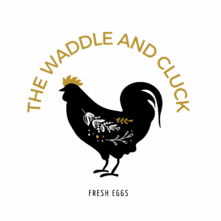Many plants, both cultivated and wild, have berries in winter. They provide food for birds and other wildlife. Curious to see what we had on our property, I walked around looking for berries and found 15 kinds of plants with berries of six different colors. Three plants had black berries, one plant had blue berries, two had orange berries, one had purple, seven had red, and two had white berries. Red was the predominant color (47% of the plants). It certainly looks cheery on a cold winter day, sparkling in the sunshine, the way a male cardinal looks with snow all-around.
Rougheaf Dogwood and Mistletoe
Let’s start with white berries. The two plants were roughleaf dogwood and mistletoe. The roughleaf dogwood is an uncommon small deciduous tree native to the Great Plains. It grows to a height of 15 to 25 feet. The flowers and fruit (berries) are white. Flowers occur during the summer and berries from August to October. Over 40 species of birds feed on the berries.

References state that mistletoe as a parasite, but that’s incorrect. Although it obtains water and minerals from the host tree, it has chlorophyll in its leaves, carries out photosynthesis and makes glucose, its source of energy. Therefore, it is not a true parasite, so it is referred to as a hemiparasite, meaning it’s only partly parasitic. Native Americans made a tea from the berries to treat epilepsy, headaches and hypertension. The berries are poisonous.

Eastern Red Cedar
The eastern red cedar was the only tree with blue berries. Red cedars are not really cedars, but junipers. Actually, there are no native cedars in the United States, although many are planted as ornamental trees. Red cedars are dense, slow-growing trees that on poor soil never become more than bushes. However, there are red cedars in the Ancient Forest of Sand Springs that are over 500 years old. The oldest red cedar is a 940-year-old tree in West Virginia.

Callery Pear
Callery pear is one of two trees with orange berries. The other one is persimmon with its orange fruit. Callery pears are Bradford pears that have reverted to the Chinese Callery stock on which they were originally grafted. They are nonnative invasive trees and should be removed wherever possible. They are crowding out our native trees and grasses.

Beautyberry
Beautyberry was the only plant I found with purple berries. It’s a shrub, 3-5 feet tall. The berries have a metallic luster and are clustered about the stem. Berries are edible and have a spicy, mildly sweet flavor. The berries are used to make jelly and wine. Native Americans made a tea from the roots and berries which they used in sweat baths to treat rheumatism, fevers and malaria.

Hawthorn and Honeysuckle
Hawthorn and native honeysuckle have red berries. Hawthorn trees are shrubs or small trees with thorny branches. The trees are highly branched. Thorns are an inch long. Mayhaw jelly is a uniquely Southern jelly made from hawthorn berries. Berries and flowers are used in herbal folk medicine as a heart tonic. Studies have confirmed its use in hypertension and angina pectoralis.

There are two kinds of honeysuckle in our area. One is a native plant; the other is nonnative and invasive. Native honeysuckle, called red or coral honeysuckle, is a climbing vine that has nonfragrant, tubular red flowers from April through September, and red berries in late fall. The vines do not cover and smother vegetation the way the nonnative invasive vines of Japanese honeysuckle do. Yellow Japanese honeysuckle has a fragrant flower and black berries.


Read more Nature Notes.









